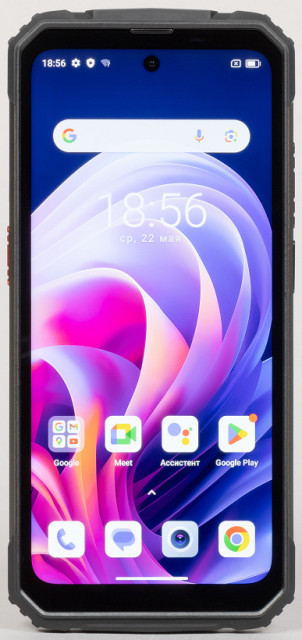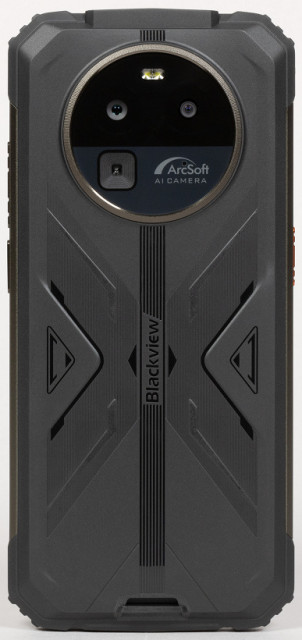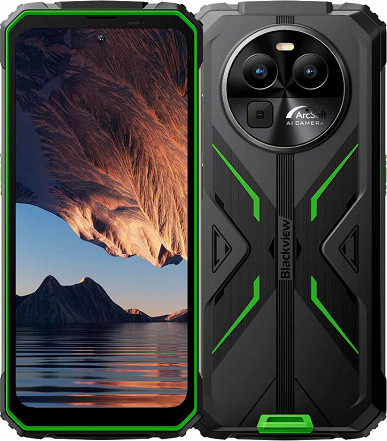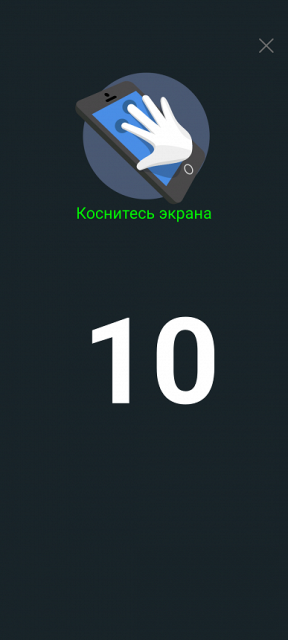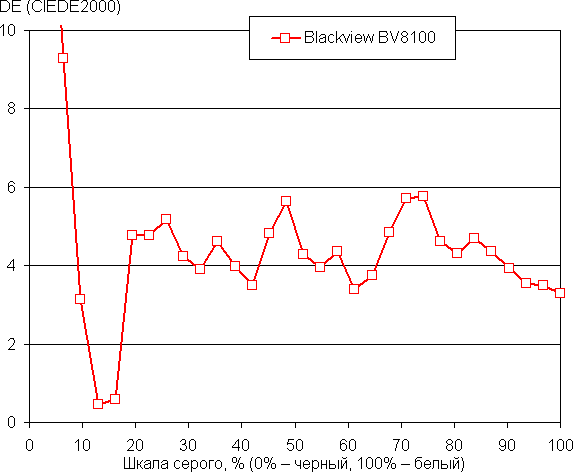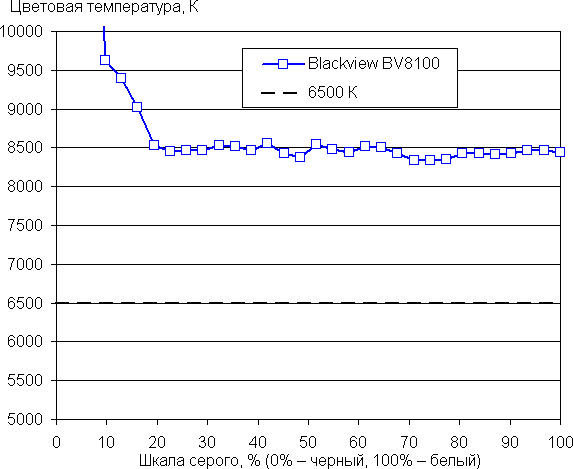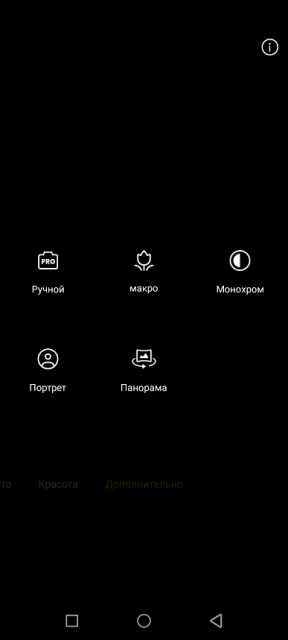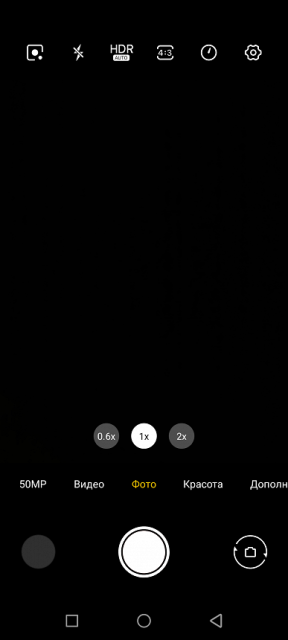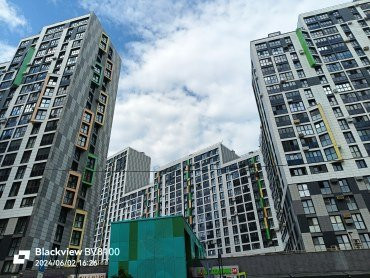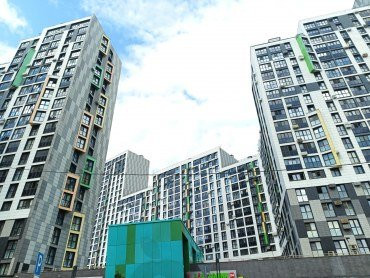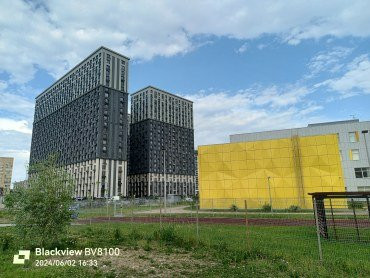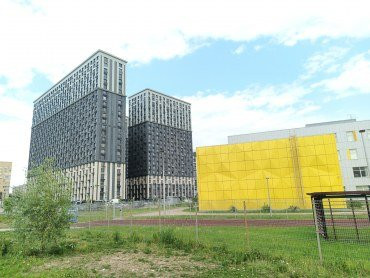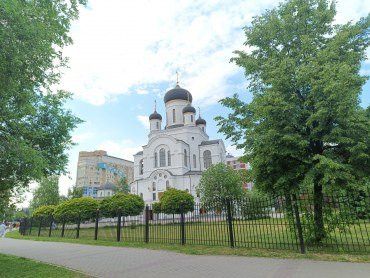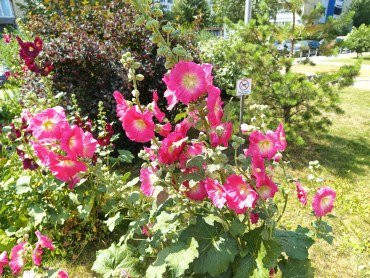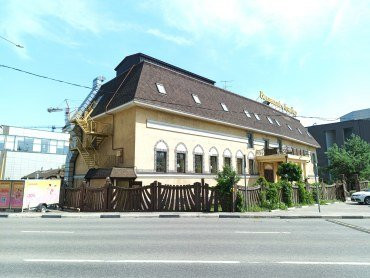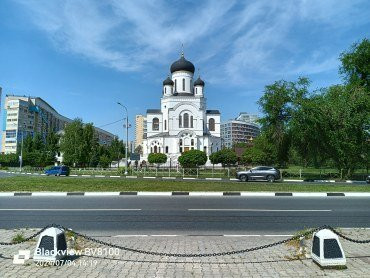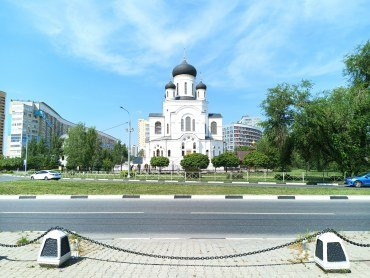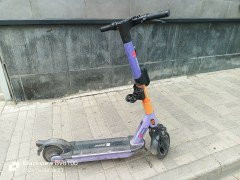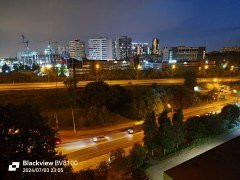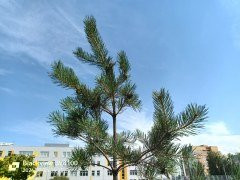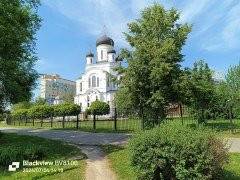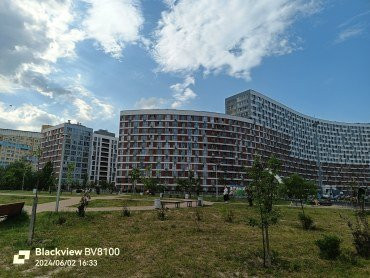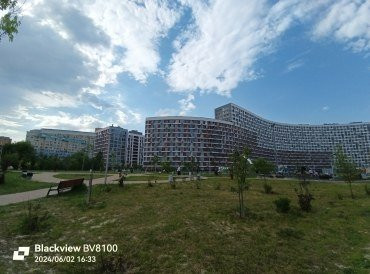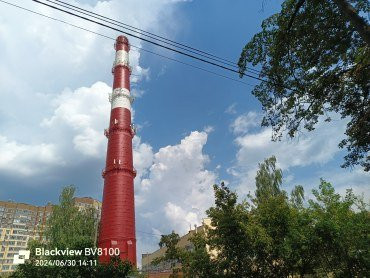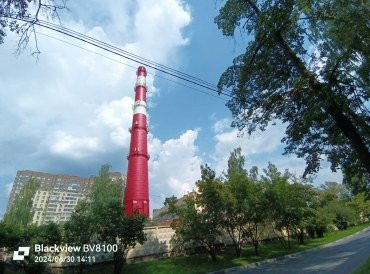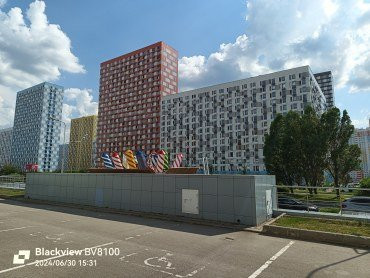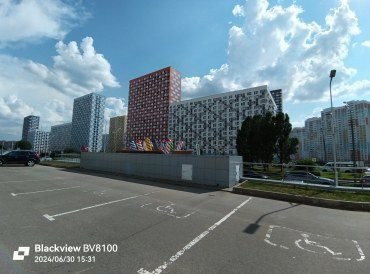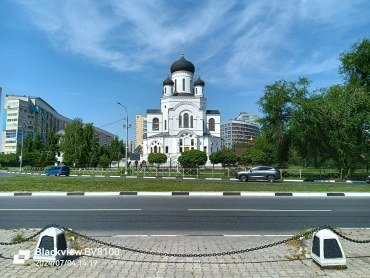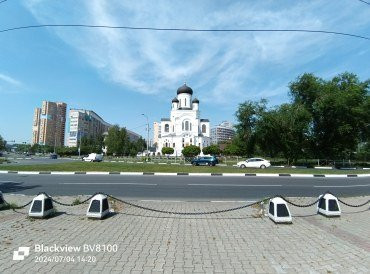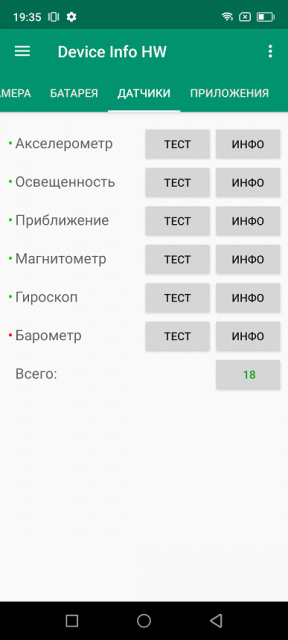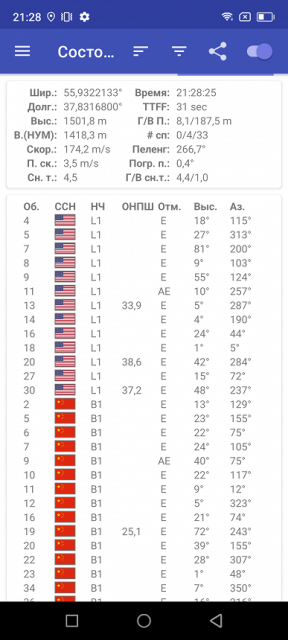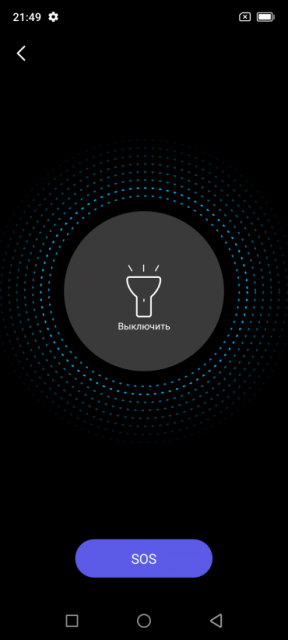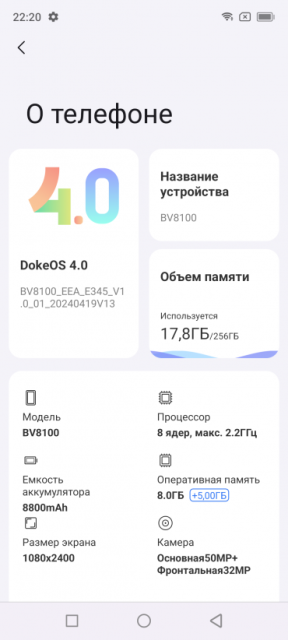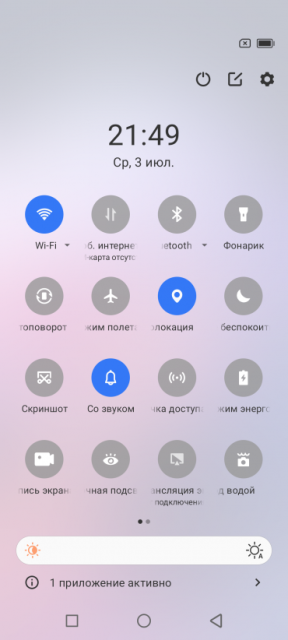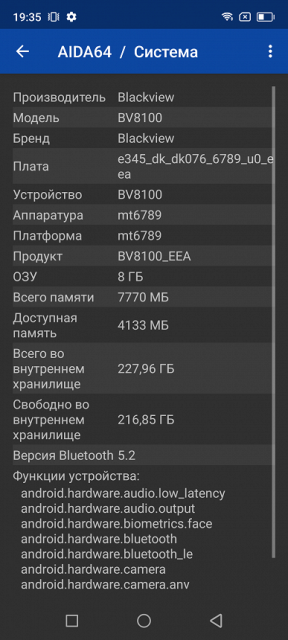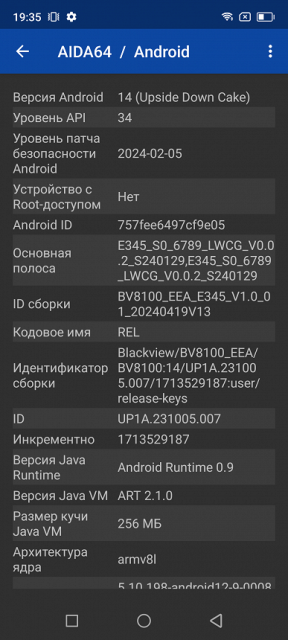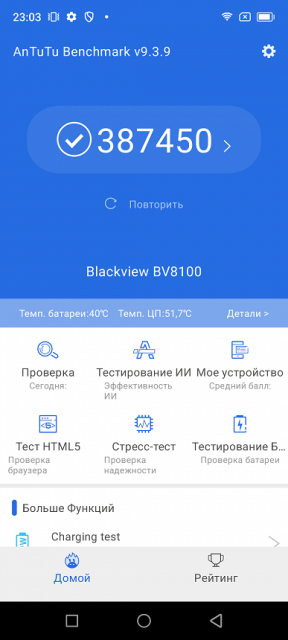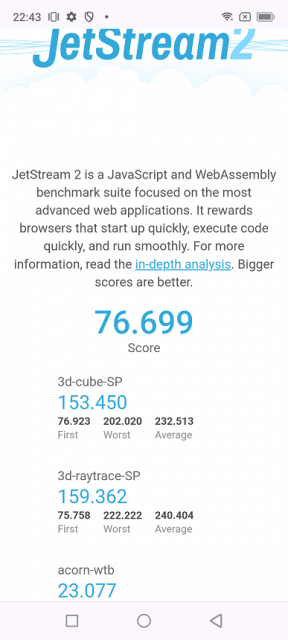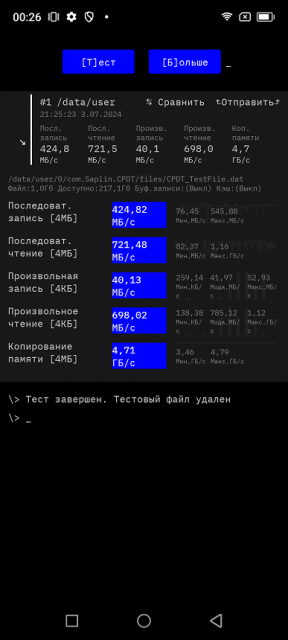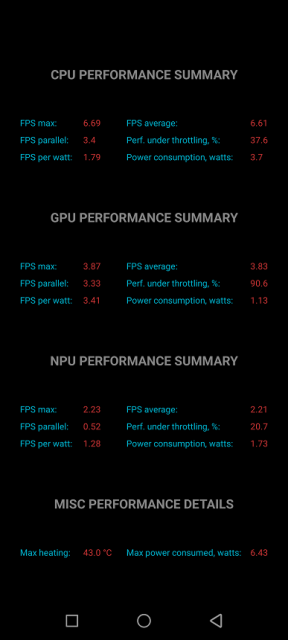Contrary to popular belief, Blackview does not limit itself to manufacturing rugged smartphones. The range of this young Hong Kong manufacturer, founded in 2013, includes a variety of devices. However, they all have one thing in common — affordable prices, which reflects the motto of the company's founder Xu Ming: «High technology does not have to be expensive.» BV8100 is the latest rugged smartphone from Blackview. The company is actively expanding the line of so-called «SUVs», and the new BV8100 model is a bright representative of this category. According to the official specifications, the device offers quite decent technical parameters. Let's check how this corresponds to real tests.
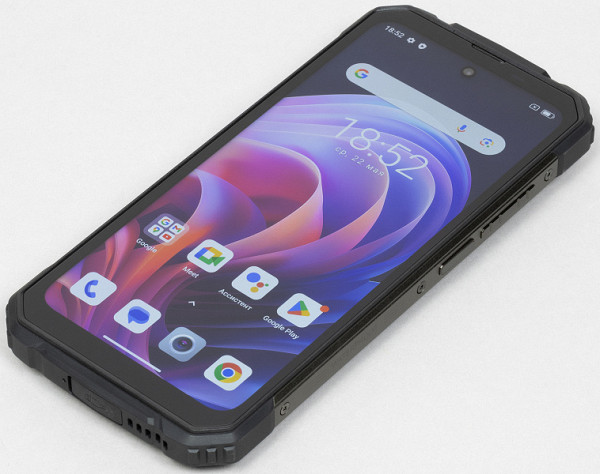
Main Features of Blackview BV8100
- SoC Mediatek Helio G99, 8 processor cores (2×Cortex-A76 @2.2 GHz + 6×Cortex-A55 @2.0 GHz)
- GPU Mali-G57 MC2
- OS Android 14
- IPS touchscreen, 6.5″, 1080×2400, 20:9, 405 ppi, 120 Hz
- RAM 8 GB, internal memory 256 GB
- Support microSD (combo slot)
- Support Nano-SIM (2 pcs.)
- Networks 2G GSM, 3G WCDMA, 4G LTE
- GPS, GLONASS, BDS, Galileo
- Wi-Fi 5 (2.4 and 5 GHz)
- Bluetooth 5.0
- NFC
- USB 2.0 Type-C, USB OTG
- 3.5 mm no audio output for headphones
- Cameras 50 MP + 13 MP (wide-angle), video 1440p@30 fps
- Front camera 32 MP
- Proximity and light sensors, magnetic field, accelerometer, gyroscope
- Fingerprint scanner (side)
- Battery 8800 mAh, charging 45 W
- Dimensions 176×81×18 mm
- Weight 360 g
Appearance and ease of use
The Blackview BV8100 smartphone comes in a flat, square-shaped cardboard box with bright design.
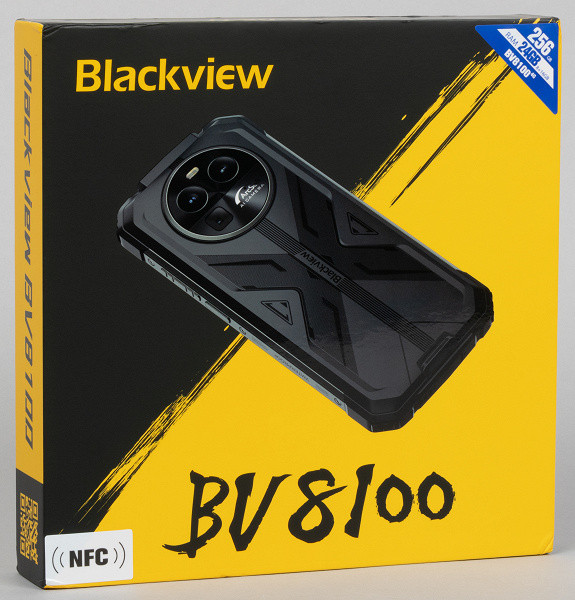
The accessory kit includes a connecting cable and a network charger (45 W) with a USB Type-C connector.

The Blackview BV8100 smartphone has a design typical of rugged devices: massive, discreet and somewhat brutal. The appearance lacks elegance and glossy shine, but this is compensated by practicality — the case is protected by rubber bumpers and has ribbed textures for additional strength.

The smartphone fits securely in the hand thanks to the rubber, matte and sometimes ribbed surfaces, which prevent it from slipping, even if your hands are wet. However, the massive body gives the device considerable weight. Even for protected models, 360 grams is a bit too much, which is most likely due to the heavy and large battery.

The smartphone body is reliably protected from water, dirt and impacts thanks to thick rubber inserts, reinforced corners, stiffening ribs and metal plates on the sides. This solution is typical for Chinese «off-road» smartphones, but it would be possible to do without metal pads, while maintaining the strength of the device.

The manufacturer claims that the smartphone is IP68 and IP69K certified, and also meets the military standard MIL-STD-810H. The back panel has a rough rubberized texture, and the front screen, made of durable Corning Gorilla Glass 5, is flat and protected by rubber edges for additional protection.
The rear camera unit is neatly designed: all elements are compactly located inside a circle, which is framed by a metal bezel with thin notches. It looks stylish, and the unit barely protrudes beyond the thick case. There is also a bright flash consisting of two diodes.
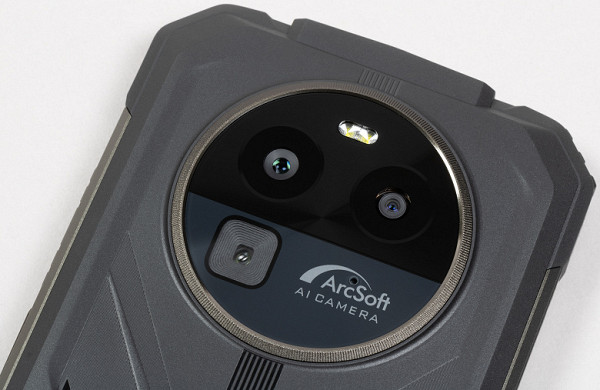
However, the role of a powerful flashlight, a must for any self-respecting «SUV», is not performed by these diodes, but by a full-fledged LED flashlight on the upper end, consisting of two powerful LEDs. It provides an incredible brightness of 170 lumens for a smartphone. The software provides various modes of its operation, including blinking and an SOS signal.

The side buttons are wide and comfortable, but their small height makes them difficult to find by touch. There are two standard buttons on one side, and an additional programmable button on the other. It can be configured to perform various functions, such as launching the camera, taking a screenshot, and others.

The fingerprint scanner is built into the flat area of the power button. It works quite quickly, and recognizes the finger adequately.
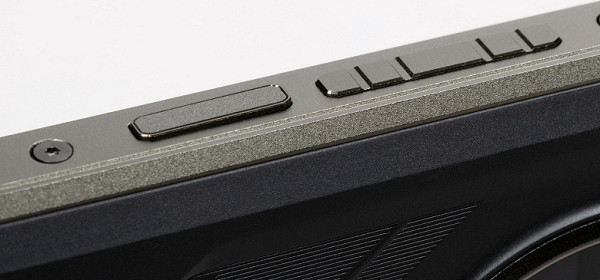
The display is surrounded by a frame so wide that there is no point in measuring it — in some places it is more than a centimeter wide. The front camera is located in the center of the top of the screen in a small round cutout.

The combination tray can accommodate two Nano-SIM cards or replace one of them with a microSD memory card.

The bottom end houses a speaker, microphone, and USB Type-C connector covered with a rubber plug. The top end is bare (except for the aforementioned flashlight).
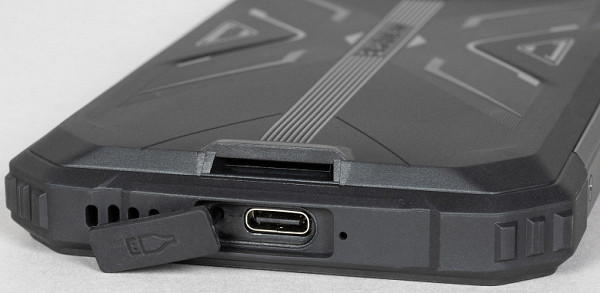
The device is available in three colors, which are not fundamentally different, but add colored elements to the black body.
Screen
The Blackview BV8100 smartphone features a 6.5-inch IPS display with a resolution of 1080×2400 (aspect ratio 20:9), protected by flat Corning Gorilla Glass 5. The physical dimensions of the screen are 68×152 mm, and the pixel density is 405 ppi. The screen supports a refresh rate of 120 Hz for smooth display.
The front surface of the screen is a glass panel with a mirror-smooth surface, resistant to scratches. The anti-glare properties of the screen are slightly better than those of the Google Nexus 7 (2013), and the oleophobic coating effectively repels grease, which makes it easier to remove fingerprints and reduces their appearance.
When displaying a white field on the entire screen area and at maximum brightness, its value reached 470 cd / m². Although this brightness is not particularly high, good anti-glare properties allow you to make out information on the screen even in sunlight. The minimum brightness is 2 cd / m², which is convenient for reading in complete darkness. Automatic brightness control works based on the light sensor located to the right of the front speaker grill. In automatic mode, the brightness changes depending on the lighting conditions. However, the auto-brightness adjustment function showed some shortcomings: in the dark, the brightness decreases to 15 cd/m² (which is quite normal), but with office lighting (about 550 lux), the brightness increases to 470 cd/m² (excessive), and in direct sunlight it also reaches its maximum. This makes brightness adjustment in the office less convenient, since when reducing the brightness for office use in the dark, the screen becomes too dim. There is no backlight modulation, there is no screen flickering.
The smartphone is equipped with an IPS matrix. Microphotographs show a typical subpixel structure for IPS screens.

Here are some photos of the same images displayed on the smartphone and Nexus 7 screens. The screen brightness is set to about 200 cd/m², and the camera color balance is set to 6500 K.
The photos show a white field when using the standard profile.

Note the good uniformity of brightness and color tone of the white field.
And the test image (Professional profile):

The colors on the smartphone screen are close to natural, but the color balance of the Nexus 7 and the tested screen is noticeably different. Please note that photographs are not a reliable source for assessing color reproduction, they should be taken as an illustration. This is due to the fact that the spectral sensitivity of the camera does not always exactly match the human perception of color.
The photo above was taken using the «Professional» profile in the display settings. There are three profiles available.
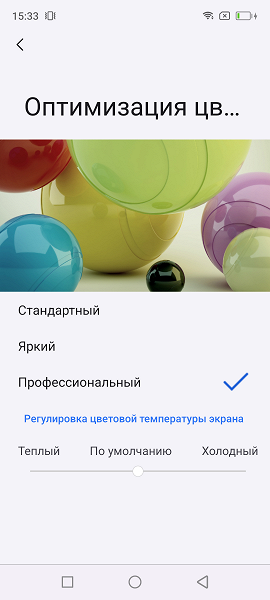
The Bright profile is distinguished by increased color saturation due to increased color contrast:
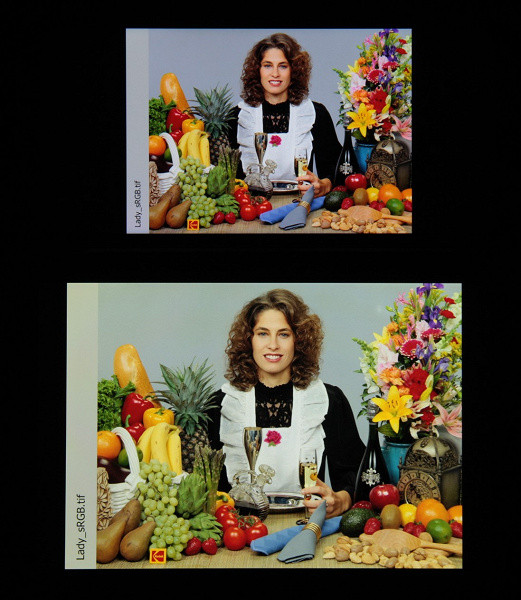
In the case of the Standard profile, the color saturation is less high, since the increase in color contrast is smaller:

In cases where color accuracy is important, the «Professional» profile should be selected.
The smartphone screen offers good viewing angles, where colors remain stable even at significant deviations from direct viewing, and shades do not invert. However, the black field becomes very light and acquires a purple tint at diagonal deviation.
When viewed from a straight angle, the black field looks uniform.
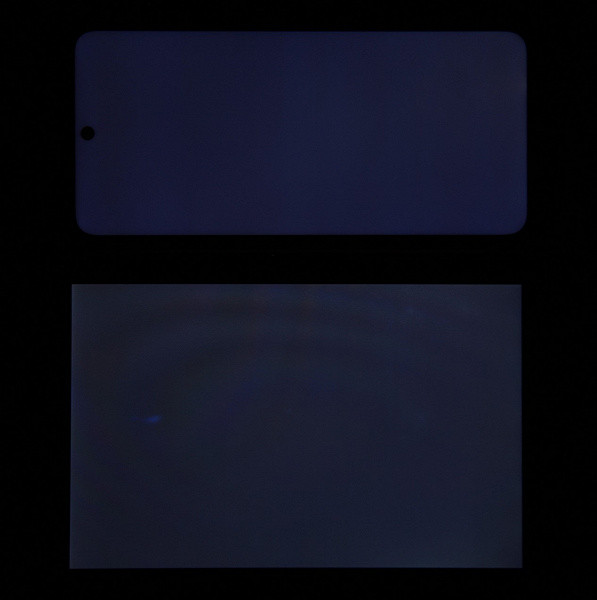
The contrast ratio of the screen in the center is about 900:1, which is a normal value. The response time from black to white and back is 18 ms (10 ms for switching on and 8 ms for switching off). The transition between 25% and 75% gray halftones takes a total of 28 ms.
The gamma curve, constructed using 32 points with equal intervals of gray shades, does not show significant deviations in highlights and shadows. The exponent of the approximating power function is 2.22, which is close to the standard value of 2.2. The real gamma curve also deviates little from the power dependence.
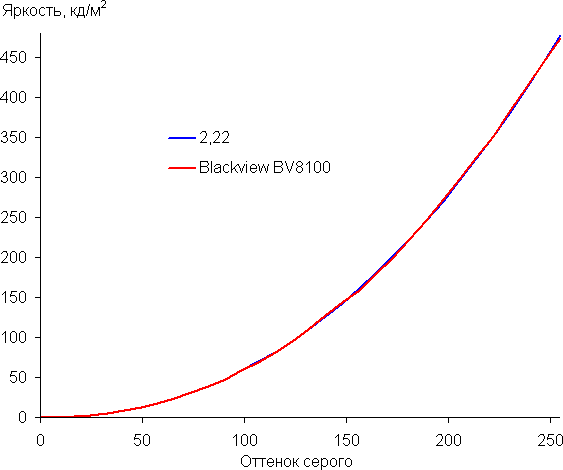
This device has a dynamic brightness adjustment that changes depending on the displayed image and time, which makes its dependence unclear. As a result, the brightness gamma curve differs from the gamma curve for static images, since the measurements were taken when displaying shades of gray on almost the entire screen area. Therefore, we conducted some tests, such as determining contrast and response time, using special templates with constant average brightness, rather than single-color fields on the entire screen. However, in this case, the dynamic change in brightness is insignificant and is not a serious drawback.
The screen color gamut is quite close to sRGB.
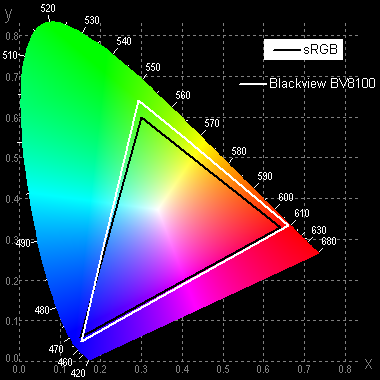
The spectra show that the matrix filters mix the components with each other to a moderate degree:

The balance of shades on the gray scale can be assessed as average: the color temperature is noticeably higher than the standard 6500 K, but the deviation from the spectrum of an absolutely black body (ΔE) remains relatively low, below 10 units. The color temperature and ΔE do not change much from one shade to another, which has a positive effect on the visual assessment of the color balance. At the same time, the darkest areas of the gray scale can be ignored, since the color balance in them is less important, and the error in measuring color characteristics at low brightness is large.
The device has a color balance correction function by adjusting the hue, but the white color hardly changes, while the gray shades change significantly. This leads to unpleasant visual effects, so it is recommended to avoid using this function.
There is also an option to reduce the intensity of the blue component, but there is no adjustment for the degree of yellowness.
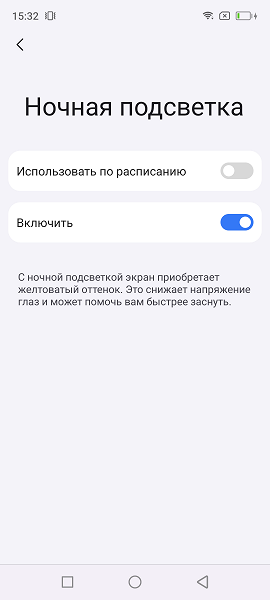
This device probably does not support DisplayPort Alt Mode for USB Type-C, which means that there is no way to output image and sound to external devices via this port.
So, let's sum it up: the screen does not have a very high maximum brightness (up to 470 cd/m²), but has excellent anti-glare properties, which allows you to use it even outdoors on a sunny day. In complete darkness, the brightness can be reduced to a comfortable level (up to 2 cd/m²). The automatic brightness adjustment mode is also available, but its operation leaves much to be desired. The advantages of the screen include the absence of an air gap between the layers and the absence of flickering, as well as good uniformity of the black field. The disadvantage is the low stability of black when deviating the gaze from the perpendicular to the screen. In general, the quality of the screen can be assessed as average.
Camera
The Blackview BV8100 smartphone is equipped with a main camera with a Samsung GN5 Isocell sensor with a resolution of 50 MP (1 / 1.57 "). It supports phase autofocus (PDAF) and optical image stabilizer. The second camera is a wide-angle module with a resolution of 13 MP. The front camera for selfies and video calls has a sensor with a resolution of 32 MP.
The main camera takes 12.5MP photos by default using pixel binning. You can switch to full 50MP resolution, but these photos are not processed, resulting in noticeable noise, poor contrast, and poor exposure. These photos are practically useless from an artistic standpoint, and while the 50MP photos have slightly better detail, this minor difference doesn’t justify the effort of post-processing.
In 12.5 MP shooting mode, photos look acceptable, but the quality remains budget, despite the marketing claims about a top sensor and optical stabilization. Detail is low, the background is a bit blurry, the dynamic range is limited, overexposure is common, and the image looks a bit soft. Night shots are noisy and poorly detailed, but can be suitable as thumbnails.
Examples of photos taken with the main camera in auto mode:
The second camera allows you to shoot at a wider angle. But here the level of detail is absolutely zero, there are no sharp parts of the frame at all.
The maximum resolution for video recording is 2.5K (1440p) at 30 fps. The 60 fps mode is not available even at 1080p. The video quality is basic, and the sound is muffled.
Telephone and communications
The smartphone supports all major mobile network ranges up to 4G, two Wi-Fi 5 ranges, Bluetooth 5.0 and NFC. However, 5G and e-SIM are not supported. In the city of Moscow, the device demonstrates stable operation in wireless networks, reliably restoring the connection after breaks. All the necessary built-in sensors, including a gyroscope, are present.
The single-channel satellite navigation module supports GPS, GLONASS, BDS and Galileo. Satellites are not detected very quickly during a cold start, but the positioning accuracy is quite satisfactory.
The speaker is loud enough, the voice of the interlocutor is clearly audible. The vibration call is not felt strongly enough through the rubber case.
Software and multimedia
The Blackview BV8100 smartphone runs on Android 14 with the proprietary DokeOS shell. This shell almost does not change the standard interface, but offers useful features such as advanced gesture support and customization of actions for the additional side button. The device has a special «underwater» mode, in which the screen does not respond to touch (since capacitive screens do not work underwater), and pressing the side button serves to activate the camera. In general, the interface is convenient: it is clean, fast and not overloaded with unnecessary elements.
Performance
The Blackview BV8100 smartphone is equipped with an octa-core Mediatek Helio G99 chip and a Mali-G57 MC2 GPU. It has 8 GB of RAM (LPDDR4X) and 256 GB of internal storage (UFS 2.1), and also supports the installation of memory cards and the connection of external devices via USB Type-C with USB OTG function.
The Mediatek Helio G99, released in May 2022 and manufactured using a 6-nanometer process technology, is a two-year-old entry-level platform. In the AnTuTu test, it scores up to 400 thousand points, which corresponds to the current entry-level performance. The interface works without delays, and applications open quickly, but its capabilities are not enough for recording 4K video at 60 fps and demanding games.
Testing in complex tests AnTuTu and GeekBench:
All smartphone test results using current versions of popular benchmarks have been summarized in tables for easy comparison. The tables also include data on several other devices from different segments tested on the same latest versions of benchmarks to provide a visual assessment. Unfortunately, it is impossible to present results from different versions of benchmarks in one comparison, so many current and worthy models that were tested on previous versions of programs remain outside the comparison.
| Blackview BV8100 (Mediatek Helio G99) | Huawei nova 12s (Qualcomm Snapdragon 778G) | OnePlus Nord 3 5G (Mediatek Dimensity 9000) | Realme 12 Pro+ (Qualcomm Snapdragon 7s Gen2) | Redmi Note 13 Pro+ (Mediatek Dimensity 7200 Ultra) | |
|---|---|---|---|---|---|
| AnTuTu (v9.x) (bigger is better) | 387450 | 546957 | 789188 | 576685 | 669583 |
| GeekBench 6 (bigger is better) | 733/2036 | 996/2453 | 1077/3175 | 894/2801 | 1126/2643 |
Testing the graphics subsystem in GFXBenchmark gaming tests:
| Blackview BV8100 (Mediatek Helio G99) | Huawei nova 12s (Qualcomm Snapdragon 778G) | OnePlus Nord 3 5G (Mediatek Dimensity 9000) | Realme 12 Pro+ (Qualcomm Snapdragon 7s Gen2) | Redmi Note 13 Pro+ (Mediatek Dimensity 7200 Ultra) | |
|---|---|---|---|---|---|
| GFXBenchmark Aztec Ruins OpenGL (Onscreen, fps) | 16 | 34 | 96 | 35 | 50 |
| GFXBenchmark Aztec Ruins Vulkan (Onscreen, fps) | 14 | 38 | 105 | 39 | 55 |
| GFXBenchmark Car Chase ES 3.1 (1080p Offscreen, fps) | 15 | 33 | 79 | 30 | 43 |
| GFXBenchmark Manhattan ES 3.1 (1080p Offscreen, fps) | 26 | 56 | 151 | 54 | 74 |
| GFXBenchmark T-Rex (1080p Offscreen, fps) | 64 | 133 | 293 | 122 | 191 |
Testing in browser cross-platform tests:
| Blackview BV8100 (Mediatek Helio G99) | Huawei nova 12s (Qualcomm Snapdragon 778G) | OnePlus Nord 3 5G (Mediatek Dimensity 9000) | Realme 12 Pro+ (Qualcomm Snapdragon 7s Gen2) | Redmi Note 13 Pro+ (Mediatek Dimensity 7200 Ultra) | |
|---|---|---|---|---|---|
| Google Octane 2 (bigger is better) | 22457 | 24923 | 29390 | 30529 | 39276 |
| JetStream (bigger is better) | 77 | 67 | 76 | 85 | 79 |
Memory speed test results:
Heat
We test for performance degradation when heating using the Burnout Benchmark program, which allows you to load the CPU, GPU and NPU:
| Load on | Heating performance, as a percentage of maximum |
|---|---|
| CPU | 38% |
| GPU | 91% |
| NPU | 21% |
Battery life
The Blackview BV8100 smartphone is equipped with a large-capacity 8800 mAh battery, which implies high autonomy. However, in practice, the level of autonomy does not fully meet expectations from such a large battery, which is due to the features of MediaTek platforms, which are not distinguished by high energy efficiency.
Testing was carried out without using energy-saving functions, at the minimum comfortable screen brightness (about 100 cd / m²). The following scenarios were used to evaluate autonomy: endless reading in Moon + Reader (using the standard light theme), continuous viewing of HD video (720p) and the game Injustice 2 with automatic graphics settings.
| Battery capacity | Reading mode | Video mode | 3D gaming mode | |
|---|---|---|---|---|
| Blackview BV8100 | 8800 mAh | 32 h 00 m | 27:00 | 8:00 a.m. |
| Tecno Spark 20 Pro+ | 5000 mAh | 18:00 | 14:00 | 6:00 a.m. |
| Vivo V30 | 5000 mAh | 23:00 | 21:00 | 8:00 a.m. |
| Vivo V29 | 4600 mAh | 21:00 | 19:00 | 8 h 30 min |
| Infinix GT 10 Pro | 5000 mAh | 20:30 h. | 18:00 | 8 h 30 min |
| Tecno Camon 20 Pro 5G | 5000 mAh | 19:00 | 16:00 | 7:00 a.m. |
| Vivo V27 | 4600 mAh | 25:00 p.m. | 19:00 | 7:00 a.m. |
These results represent the best results achieved under ideal testing conditions, including no SIM cards. Any changes to the usage scenario will likely result in a reduction in battery life.
Charging with the included AC adapter takes approximately 2 hours.
Summary
The Blackview BV8100 smartphone has a durable rubber case, which provides excellent protection. However, its other specifications are average at best. Despite the large 8800 mAh battery, the battery life is good, but not record-breaking. The screen, performance, network capabilities, sound, and photo and video quality are all in line with a standard third-tier mobile device.

